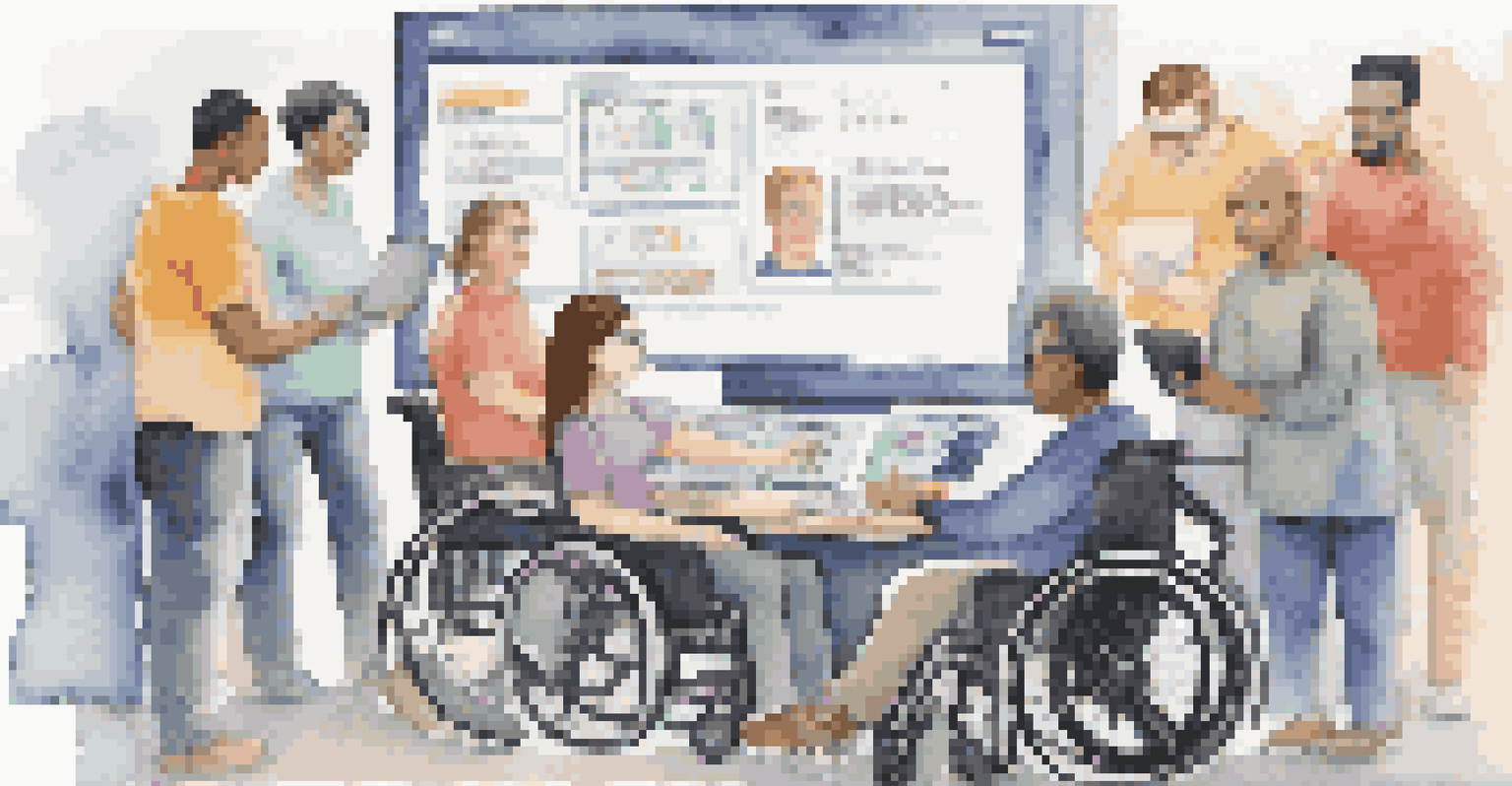Understanding User Behavior for Better Software Design

The Importance of User-Centered Design in Software Development
User-centered design (UCD) focuses on understanding the needs and preferences of end users during the software development process. By prioritizing user input, developers can create software that not only meets functional requirements but also provides an enjoyable experience. This approach often leads to higher user satisfaction and can significantly reduce the need for expensive redesigns later on.
Design is not just what it looks like and feels like. Design is how it works.
Imagine trying to navigate a new city without a map. You might stumble upon interesting places, but the experience could be frustrating and time-consuming. Similarly, software that lacks a user-centered design can leave users feeling lost and confused, ultimately driving them away. By incorporating user feedback from the very beginning, developers can ensure that their software guides users effectively.
Incorporating UCD principles fosters a collaborative environment where users feel valued and heard. This collaborative effort can lead to innovative solutions that developers might not have considered otherwise. Ultimately, a user-centered design mindset transforms software from a mere tool into a resource that truly enhances users' lives.
Understanding User Behavior Through Research and Analysis
To effectively design software that resonates with users, it’s crucial to conduct thorough research and analysis of user behavior. This can involve methods like surveys, interviews, and user testing, which provide valuable insights into how users interact with software. By observing users in real-time, developers can identify pain points and areas for improvement.

Think of it like being a detective. You gather clues—users' actions, preferences, and frustrations—to piece together a clear picture of their experience. This allows developers to understand not just what users do, but why they do it. For instance, noticing that users often abandon a form halfway through can signal a need for simplification.
User-Centered Design Boosts Satisfaction
Prioritizing user input during software development leads to enhanced user experiences and higher satisfaction.
Moreover, analyzing user behavior data can reveal trends over time, helping developers anticipate future needs. This proactive approach can lead to more dynamic and adaptive software design, ultimately leading to enhanced user satisfaction and loyalty.
Creating User Personas to Represent Target Audiences
User personas are fictional characters that represent different segments of your audience. By creating detailed personas, developers can better understand the varying needs, motivations, and challenges of their users. This practice helps ensure that the software design caters to a diverse range of user experiences.
User experience is everything. It always has been, but it’s not always understood.
Imagine designing a car without considering the drivers who will use it. Some may prefer a compact vehicle for city driving, while others might need a spacious SUV for family trips. Similarly, user personas allow developers to tailor their software to meet specific user needs, leading to a more personalized experience.
Incorporating user personas into the design process enables teams to empathize with users, fostering a mindset focused on solving their unique problems. This targeted approach not only improves user satisfaction but also enhances overall software effectiveness.
Utilizing User Feedback for Continuous Improvement
User feedback is a goldmine for software designers, providing insights that can drive continuous improvement. Collecting feedback through mechanisms like surveys, feedback forms, or user forums allows developers to understand how real users perceive their software. This information is invaluable for making informed design decisions.
Consider the process like a chef tasting their dish before serving it. Just as a chef seeks feedback to enhance flavor, developers should actively seek user opinions to refine their software. This iterative feedback loop can lead to enhancements that significantly improve user experience over time.
Continuous Feedback Drives Improvement
Collecting user feedback regularly allows developers to make informed design decisions that refine the software over time.
Moreover, fostering a culture that values user feedback can create a sense of community among users, making them feel more invested in the product. When users see that their input leads to meaningful changes, they are more likely to remain loyal to the software and advocate for it within their networks.
The Role of Analytics in Understanding User Interactions
In the digital age, analytics tools provide powerful insights into how users interact with software. By tracking user behavior through metrics like click rates, session duration, and conversion rates, developers can identify trends and patterns that inform design decisions. This quantitative data complements qualitative research, creating a comprehensive view of user behavior.
Imagine watching a movie without sound; you might miss crucial plot points. Similarly, relying solely on qualitative feedback can provide an incomplete picture. Analytics serve as the 'soundtrack' that helps developers understand the full context of user interactions, enabling them to make data-driven decisions.
Additionally, analytics can help identify segments of users who may be struggling with certain features. By targeting these areas for improvement, developers can enhance the overall usability of the software, ensuring that it meets the needs of all users effectively.
Designing for Accessibility to Enhance User Experience
Accessibility in software design is about ensuring that all users, regardless of their abilities, can access and benefit from the software. By incorporating accessibility features, such as screen readers, keyboard navigation, and customizable interfaces, developers can create inclusive experiences that cater to diverse user needs. This not only enhances user experience but also broadens the software's reach.
Think of accessibility like providing ramps in a building. Just as ramps ensure that everyone can enter, accessibility features ensure that all users can interact with software comfortably. By designing with accessibility in mind, developers create an environment where all users can thrive.
Accessibility Enhances User Experience
Incorporating accessibility features ensures all users can benefit from software, leading to broader reach and usability.
Moreover, embracing accessibility can lead to unexpected benefits, such as improved usability for all users. Features designed for users with disabilities often enhance the experience for everyone, leading to a more intuitive and seamless interaction with the software.
Iterative Design: Adapting Based on User Insights
Iterative design is an approach that emphasizes continuous cycling through phases of design, testing, and refinement based on user feedback. This process allows developers to make incremental improvements, ensuring that the final product aligns with user needs and expectations. By embracing iteration, software design becomes more flexible and responsive to user insights.
Think of it like sculpting a statue. The sculptor chips away at the stone, constantly assessing and refining their work based on the shape emerging. Similarly, iterative design allows developers to adjust their software based on user reactions, leading to a polished and user-friendly final product.

This approach not only enhances user satisfaction but also reduces the risk of major design flaws that could emerge late in the development process. Embracing an iterative mindset fosters a culture of continuous improvement, ultimately leading to better software design.